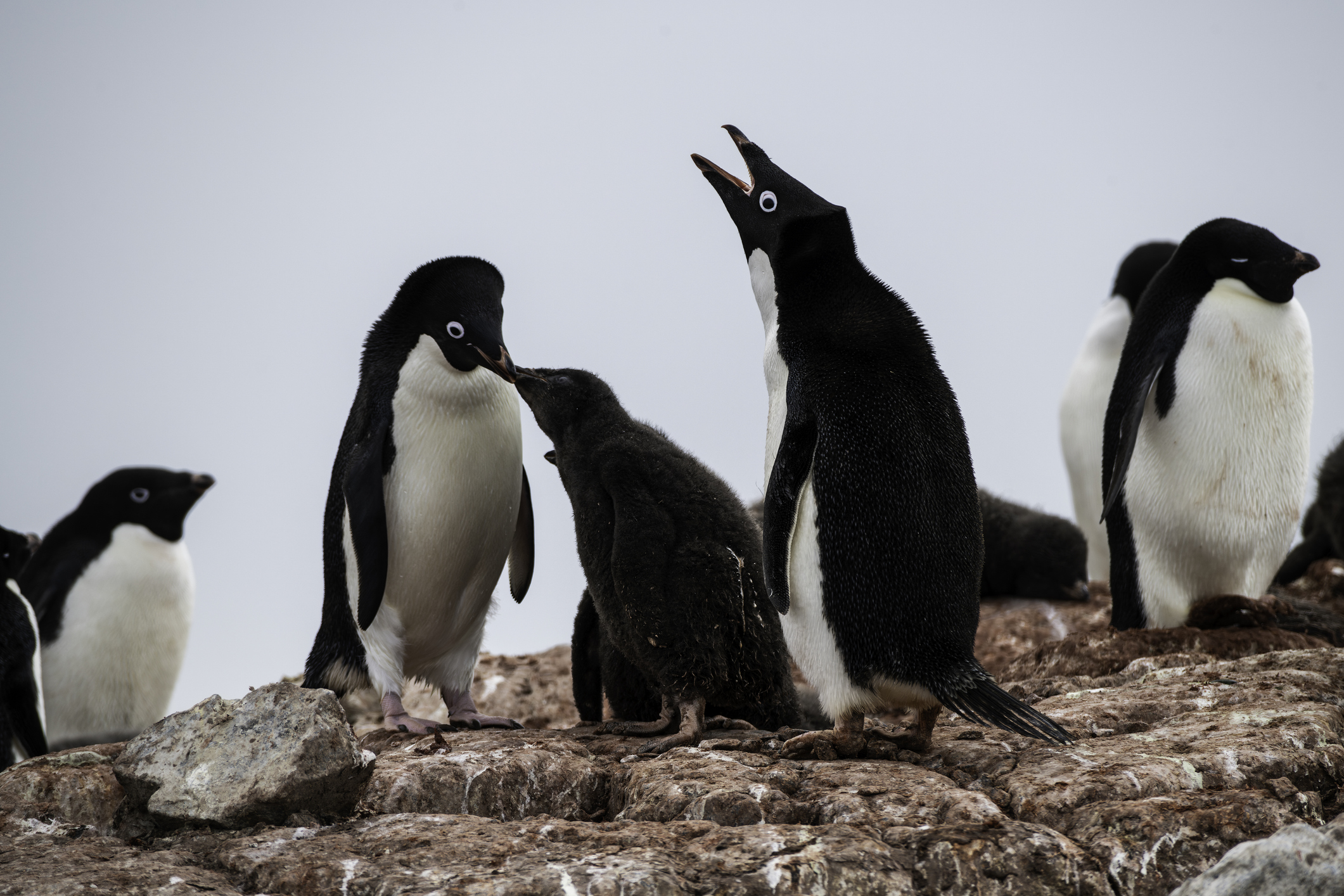It is easy enough to read about the climate crisis through the dozens of devastating stories that run each week, warning us of the people who will be displaced or otherwise harmed by the planet's rapidly rising temperatures. It is also easy to feel the climate crisis, through escalating summer heatwaves and the choking smog of wildfire smoke, and to see it in photos of emaciated polar bears and other species at risk of going extinct. But can we hear the climate crisis?
The most obvious answer to this question, I think, is less about what we hear than what we no longer hear. In North America, 389 species of birds face an increased risk of extinction from rising temperatures. Around the world, 40 percent of all insect species have declined dramatically and may go extinct in the next few decades. Amphibians are the most threatened vertebrates, and two percent of the world's amphibians are already being pushed past their physiological limits of heat. Fewer birds mean more muted mornings, fewer insects mean quieter choruses of crickets and cicadas, and fewer amphibians muffle the evening bellows of mating frogs.
In the book Sounds Wild and Broken: Sonic Marvels, Evolution’s Creativity, and the Crisis of Sensory Extinction, the biologist David George Haskell argues that we have landed ourselves in a sensory crisis. As he explains it, we have devastated and disrupted countless ecological habitats and displaced the indigenous peoples who stewarded them. The droning sounds of our large ships drown out the creatures who call to each other in the oceans. The noise pollution of cities diverts our focus and makes us sicker, and is a burden unequally placed on lower-income communities. Throughout this, we fail to listen to the world around us, and in doing so disconnect ourselves from humans and nature. Haskell argues that this estrangement "destroys the necessary sensory foundation for human ethics," an ethics predicated on listening to the voices of others, human and non-human. "The vitality of the world depends, in part, on whether we turn our ears back to the living Earth," he writes.
I wanted to turn my ears back to the living Earth, so I reached out to people who record the sounds of nature and asked them to share soundscapes recorded in a particular place, that capture the totality of its sounds, natural and artificial. I asked them to share any insights their recordings offered into the onslaught of crises facing our planet. Then I went outside to my roof and listened to the soundscape of my own environment.
The following is a listening guide to reconnecting with the sounds of the world, from corners far and near, so that we might better understand how it's changing.
Crickets at Kudremukh National Park in the Western Ghats, India
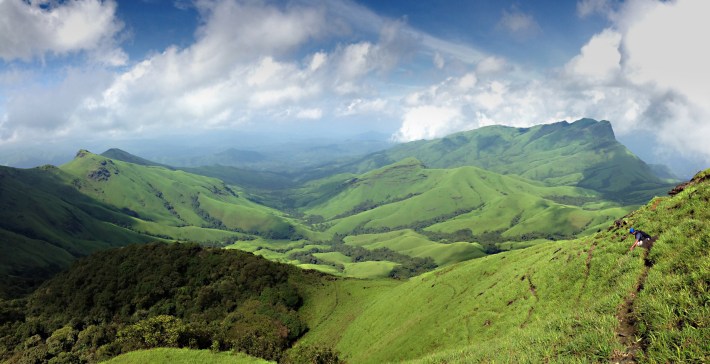
After the sun sets on the lush green rainforests of Kudremukh National Park, the insects begin to chorus, with male crickets and katydids calling out for a mate. Walking throughout the forest, you would not be able to see them. But they far outnumber the larger vertebrates, and though their bodies are little, their songs are loud. They sing not with voices but through their bodies. They rub their wings and legs, percuss their organs, strike themselves against other surfaces, and even shake their body parts to produce vibrations. Some of these songs are imperceptible to us, such as the ultrasonic signals of a katydid. But we can hear the crickets.
The hills of Kudremukh are alive with the sounds of field crickets, bark crickets, tree crickets, and bush crickets, also known as katydids. "Kudremukh National Park has some of the least disturbed rainforests in India, having been protected for several decades now," Rohini Balakrishnan, a bioacoustics expert at the Indian Institute of Science in Bengaluru, wrote in an email. But one section of the park, which has been opened to mining, has a large patch of forest with just one species of tree Poeciloneuron indicum, or the Indian milled-leaf tree. Balakrishnan seized this opportunity to study how land use and tree species affect the forest's soundscapes. Arpit Omprakash, a student of Balakrishnan's, took a nighttime recording of the disturbed forest dominated by a single tree type. The soundscape is quiet, with a muted soundtrack of some bush cricket songs.
Meanwhile, in this recording taken at the same time of night in the same season from the undisturbed rainforest, you can hear a medley of bush crickets: the whining call of a lemon-lime colored false leaf katydid Pirmeda and the whistling call of the false leaf katydid Onomarchus, as well as calls from the leaf-mimicking Phyllomimus and ground-dwelling katydid Mecopoda. "The harsher calls are of high bandwidth (noisy) bush cricket species calls and the melodious ones are tonal (whistle-type) calls of bush cricket species," Balakrishnan said. These recordings suggest that forests with diverse communities of trees are better equipped to support more species of acoustic insects, and the resounding choirs they form.
Adélie penguin nesting colony on Torgersen Island, Antarctica
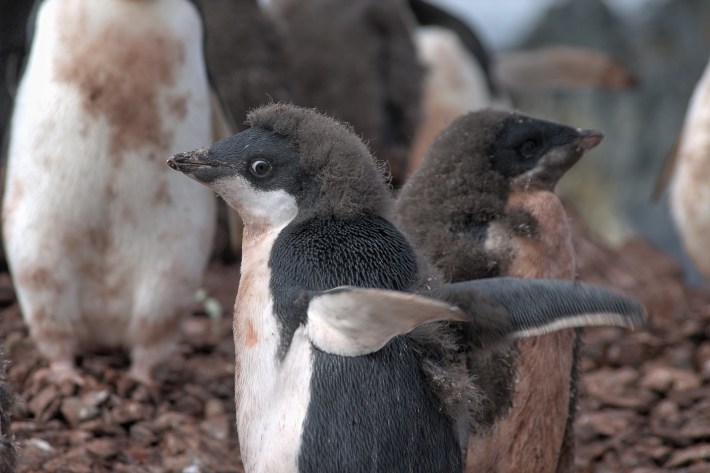
Torgersen Island, a small stretch of rocks on the western side of the Antarctic Peninsula, is home to thousands of raucous Adélie penguins. The West Antarctic ice sheet is melting more rapidly under climate change than any other part of the continent, at triple the historical rate. All this warming continues to melt the sea ice on which Adélie penguins depend, causing colonies to shrink in size or even go locally extinct. Meanwhile, gentoo penguins have benefited from the warming, with populations shifting further south each year. In 2007, the colony of Adélie penguins that nested on the nearby Litchfield Island went extinct.
The composer and field recordist Cheryl Leonard came to Torgersen in 2009 through an artists and writers program run by the National Science Foundation. Torgersen is festively adorned by the penguins' stone nests and the gaudy remains of their meals of krill: "pink penguin poops," Leonard said. When she arrived, she was struck by the musicality of the birds nest-building habits. "They've actually chosen to nest on quite a musical island," she said. "The rocks just sound good, and as the penguins walk around, their feet knock the little rocks, and they're making little melodies." Her recordings were often interrupted by the booming peal of a calving glacier, which happened continuously throughout the day and night. "You really had this physical sense of how much ice was coming off the glacier, and how dramatically the tidewater glaciers there are diminishing," she said. "You could feel, it's like thunder."
As Leonard listened to the squawking sounds of the colony, she thought of their fate: Scientists predict that in less than 25 years, the Adélies of Torgersen will go extinct. "It's quite a cacophonous soundscape with the penguins there," Leonard said. "And when they're not there anymore, it's going to be so much quieter." For now, the Adélies remain on Torgersen. The very high squeaks sounding at the beginning of the tape are chicks, one of which attempts an adult vocalization at the five-second mark. At :33 and 1:20, you can hear the trumpeting and kazooing sounds of the adult Adélies. The distant, thunderous sounds at :48 and 3:43 are the sounds of glaciers calving.
Northern Elephant Seals at Point Reyes National Seashore in California
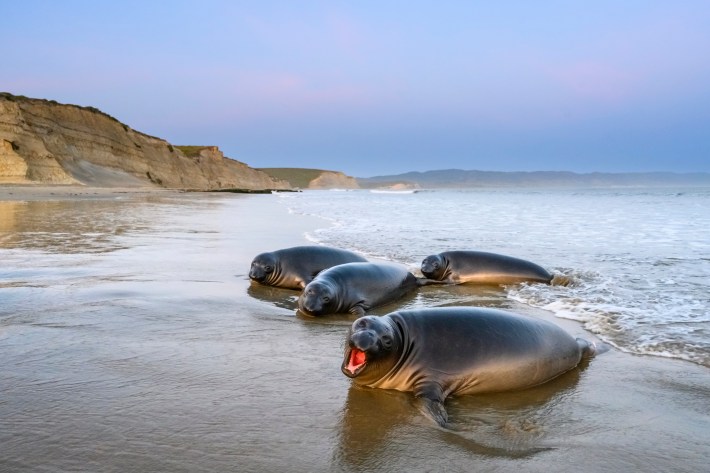
Leonard, who lives in the Bay Area, fell in love with elephant seals on her trip to Antarctica. "Then I came back to California, and I was like, wait a minute, there's elephant seals here," she said. She has spent the last five years recording the colony of northern elephant seals during their breeding season on the Point Reyes National Seashore in Marin. After Leonard started recording, she learned the seals had been slaughtered nearly to extinction in the 1800s, with the only surviving colony on Mexico's Guadalupe Island. The seals survived because the Mexican government banned hunting northern elephant seals and made Guadalupe Island a biological reserve. The U.S. government followed suit shortly after, and the seals came to northern California in the 1950s.
Although the seals' recovery is a success story, they're not out of the woods yet. Their breeding grounds are threatened by rising sea levels and coastal erosion, and extreme weather events endanger vulnerable pups. Now, scientists worry that bird flu could wipe them out, as it has done to several seal colonies in South America. In 2023, bird flu swept through Argentina and killed more than 17,000 southern elephant seal pups, a loss that may take decades to recover. "That has the potential to completely devastate a colony that I've been recording for five years," Leonard said. After all this time, she's become attached to the mammals. She's seen weaned pups teach themselves how to swim, newborn pups speaking with their mothers alongside the afterbirth. She's seen elephant seal sex—"which is pretty disturbing"—and cows bleeding on shore after a strike from a boat or a shark.
Over this time, Leonard has learned to recognize a little more of what the seals say to each other. This recording, taken in the winter of 2023, captures a group of around 25 northern elephant seals resting on the beach. The high squealing sounds, heard at 4:19, are the pups. Female elephant seals, also called cows, can be heard having spats throughout, starting at :15, :56, and 3:00. The moms dialogue with their pups at 2:27 and 3:28, and the low percussive clapping at 1:02, 1:18, and 2:15 are the males, or bulls, warning intruders away from their territory. The occasional snores, at :10, 1:34, and 2:35, are from a bull at rest.
Birds at the Dedan Kimathi University Wildlife Conservancy in Kenya
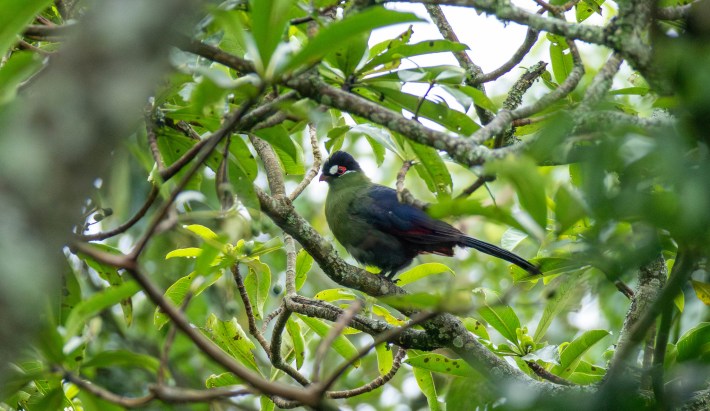
The snow-capped peak of Mount Kenya, an ancient volcano and the second-highest mountain in Africa, sits 5,199 meters high. Life abounds in the valleys that radiate outward from the peak. Nearby, the Dedan Kimathi University of Technology in Nyeri manages a conservancy on 120 acres of undisturbed forest, which is home to Sykes' monkeys, zebras, impalas, waterbucks, warthogs, and impalas, among others. "It is within the larger Mt. Kenya ecosystem that is an important bird area and the source of several important rivers in Kenya," Ciira wa Maina, an electrical engineer at the university, wrote in an email. Yet this land borders human settlements, where our noise leaks in.
In June, Maina and Peter Njoroge, the head of ornithology at the National Museums of Kenya, published a paper in Philosophical Transactions of the Royal Society B that tested how traditional bird surveys and passive acoustic recording compared in terms of monitoring the presence and abundance of bird species. The autonomous recorders frequently picked up on chattier species, such as the “strik-strik-strik-strik-strik” song of a grey-backed camaroptera and the musical chirps of a yellow-whiskered greenbul. Both birds can be heard in the recording below—along with some engine noise.
The recordings also caught a Hartlaub's turaco, a jewel-colored bird whose populations are disappearing with deforestation of their niche habitat of montane forest. One scientist told the New York Times that the species could lose more than 60 percent of its habitat with climate change. "It is moving to higher altitudes," Maina said. The Hartlaub's turaco gruff "kow kow" call can be heard in the recording below, along with the hollow "hoo" notes of a tambourine dove and another chattering yellow-whiskered greenbul.
Though the researchers were targeting birds, other species slipped in, such as the midnight shrieks of a tree hyrax or the calls of Sykes' monkeys. But the most frequent intrusions came from humans: the peals of cow bells, the gravelly sounds of quarrying, and the rumbles of airplanes and engines. "Human impact can be heard everywhere!" Maina said. "In the middle of Mt. Kenya National Park, you will hear aeroplanes overhead."
Glacier Bay National Park and Preserve in Alaska
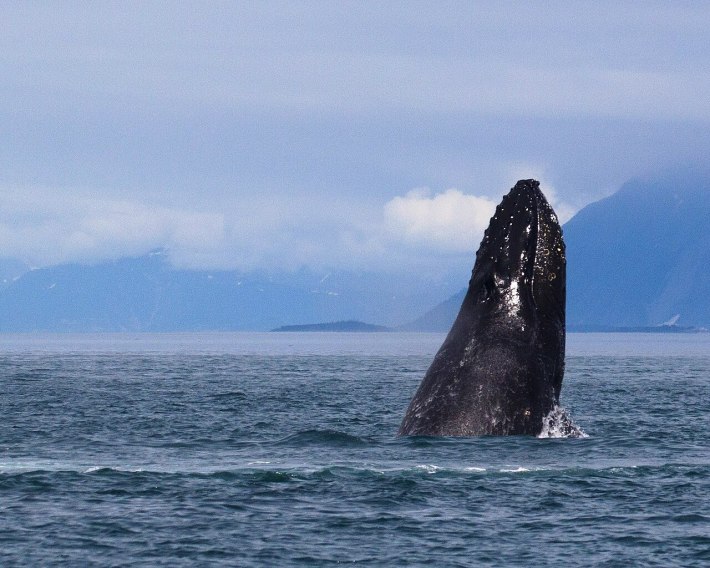
Glacier Bay is famous for its 1,045 glaciers, which span 27 percent of the park. Now, nearly all of these glaciers are thinning, stagnating, or retreating. The park has lost 11 percent of its glacial ice since the 1950s. Its frigid blue waters are a sanctuary for humpback whales, which throng to the nutrient-rich area for summertime feasts. Their numbers have bounced back since their historic depletion under whaling, but the whales face new hazards, such as marine heatwaves that can collapse their food chains and starve their calves.
Davyd Betchkal, a biologist and acoustician with the National Parks Service, has collected soundscapes throughout Glacier Bay and other national parks in Alaska as a part of a monitoring program with the national parks' Natural Sounds and Night Skies division. Betchkal cautions that soundscapes are "human-specific," meaning they represent the sounds we can hear, but not necessarily the sounds above 20,000 Hz that would be perceptible to a bat. The recording below is from Bartlett Cove, a campground in the park. "So this particular soundscape is something you could hear from your tent in the morning," they said. The primary sound in this recording comes from a humpback whale "periodically breathing, slapping its pectoral fins and vocalizing." The melodic song of a varied thrush resounds throughout, and at 1:21, you can hear the repetitive drumming of a sooty grouse. Tania Lewis, a wildlife biologist at the park, deployed the microphone, and Betchkal analyzed and processed the clips.
Although Betchkal cautioned that individual soundscapes do not offer much insight into longer-term climate trends, they added that the parks have recorded at the same sites each year in Glacier Bay to gather more data. The recording below was taken in the Rendu Inlet, and captures what someone might hear while paddling in a sea kayak. It spotlights a singing varied thrush and a humpback whale, whose breathing becomes louder as it approaches the microphone, especially at 5:50. "What I like about this cut is that it is energizing, immersive and anticipatory," Betchkal said. "During this particular midnight hour, we may infer that the ocean must have been glassy still."
How to better listen on your own:
If you'd like to deepen your connection with the sounds that surround you, Leonard recommends going out alone, or with a friend who is comfortable with hanging in silence. "The number one thing is you have to be quiet," she said. She recommends trekking out early in the morning or later in the evening, when wildlife tends to emerge and call out. And pay attention to the seasons, especially if you're looking to hear something specific. For example, in California, springtime is a great time to listen to birdsong, and September is the time to hear the tule elk bugling in an attempt to attract harems of females. Balakrishnan recommends closing your eyes, too. "Focus on each sound and try to figure out what it is," she said.
The rugged fjords, forests, and coasts of Glacier Bay National Park are the ancestral lands of the Tlingit people. In the Tlingit language, the noun "k'áatl' is used to describe quiet things and quiet people," Betchkal said, adding that its root means "to stop." In Betchkal's eyes, to listen well, you need to stop and be still. And though national parks and other wildernesses offer thrilling soundtracks, a good listening practice does not require such remote majesty, Betchkal added. "You don't need to be in a superlative place," they said. Rather, you just need to find some respite from other people and your own mind, and shift your attention toward the sounds around you. Then the world will sound richer and full of every kind of song.
